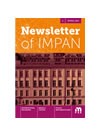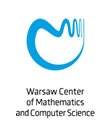Hegyvári’s theorem on complete sequences, II
Tom 203 / 2022
Streszczenie
Let $A$ be a sequence of nonnegative integers. A sequence $A$ is said to be complete if every sufficiently large integer can be represented as a finite sum of distinct terms of $A$. For a sequence $S=\{s_1,s_2,\ldots \}$ and a real number $\alpha \gt 0$, let $S_{\alpha }=\{\lfloor \alpha s_1\rfloor ,\lfloor \alpha s_2\rfloor ,\ldots \}$, $U_S=\{\alpha :S_{\alpha } \text { is complete}\}$ and let $\mu (U_S)$ be the Lebesgue measure of $U_S$. In 2013, Chen and Fang improved a 1995 result of Hegyvári by proving that for $1 \lt \gamma \lt 2$, if $s_{n+1} \lt \gamma s_n$ $(n\ge n_0)$ and $U_S\neq \emptyset $, then $\mu (U_S) \gt 0$, and proved that $U_S\neq \emptyset $ if $1 \lt \gamma \lt 7/4$. Recently, Fang and Liu showed that $U_S\neq \emptyset $ if $1 \lt \gamma \lt 1.898\dots $. It is known that for any $\gamma \gt 2$, there exists a sequence $S$ with $s_n \lt s_{n+1} \lt \gamma s_n$ $(n\ge n_0)$ such that $U_S=\emptyset $. In this paper, we prove that $U_S\neq \emptyset $ if $1 \lt \gamma \lt 2$. This gives an affirmative answer to a problem posed by Chen and Fang.









